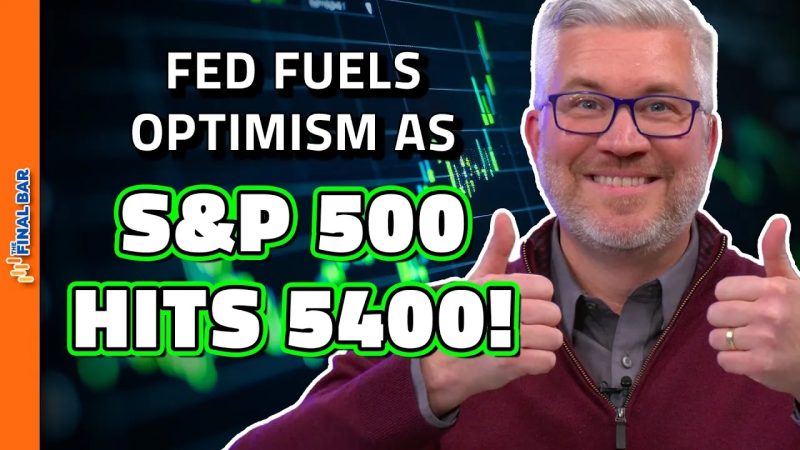The current state of the S&P 500 reaching highs above the 5400 mark is causing a stir in economic circles, with debates ranging from economic optimism to irrational exuberance. Let’s take a closer look at the factors driving this surge and what potential implications it may have for investors and the economy at large.
One of the key drivers behind the S&P 500’s record-breaking performance is the overall positive outlook on the economy. The post-pandemic recovery has been swift and strong, with indicators such as falling unemployment rates, robust consumer spending, and strong corporate earnings bolstering investor confidence. Additionally, the Federal Reserve’s accommodative monetary policies, including low interest rates and ongoing bond purchases, have provided further support to equities.
However, some analysts are raising concerns that the current valuations of stocks may be reaching unsustainable levels. The rapid pace of the market rally, coupled with elevated price-to-earnings ratios and other valuation metrics, has led to fears of a potential market bubble. Critics argue that the exuberance driving stock prices higher may not be rooted in underlying fundamentals, thus posing a risk of a market correction in the future.
Another factor contributing to the S&P 500’s climb is the flood of liquidity in financial markets. The unprecedented stimulus measures enacted by governments and central banks worldwide in response to the COVID-19 crisis have injected trillions of dollars into the global economy. This liquidity infusion has found its way into various asset classes, including stocks, leading to inflated asset prices. As such, the question arises whether the current market levels are justified by actual economic performance or merely a result of excess liquidity seeking returns.
Furthermore, the technological revolution and the rise of disruptive industries have fueled growth in certain sectors, such as tech, healthcare, and renewable energy. Companies at the forefront of innovation have seen their stock prices soar, driving up major indices like the S&P 500. Investors are betting on these companies to continue leading the way in a rapidly evolving digital economy, which has in turn propped up the overall market.
In conclusion, while the S&P 500’s surge above 5400 reflects optimism regarding the economic recovery and prospects for certain industries, caution is warranted due to concerns of overvaluation and market exuberance. Investors should keep a close eye on key indicators such as corporate earnings, interest rates, and economic data to gauge the sustainability of the current market levels. Diversification, risk management, and a long-term perspective remain crucial in navigating the complexities of the financial markets amidst unprecedented economic conditions.



























